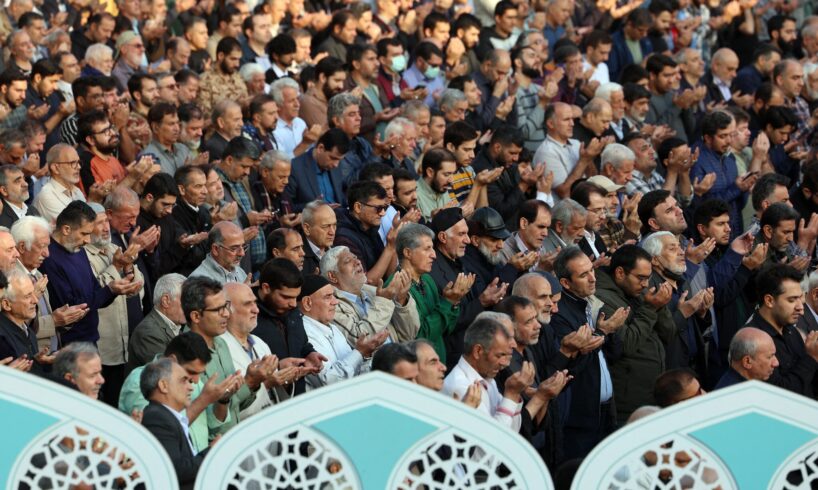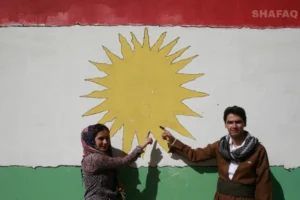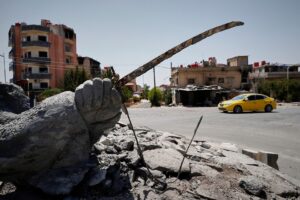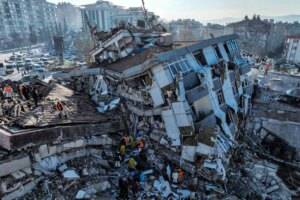
TEHRAN, Iran — Hundreds of people gathered on Friday at a mosque in northern Tehran to pray for rain, with Iran gripped by one of its worst droughts in decades.
Rainfall in the capital has this year been at its lowest level in a century, local officials say, and half of Iran’s provinces have not seen a drop fall in months.
Faced with water shortages, the government has decided to cut off water supplies periodically to Tehran’s 10-million-strong population to limit consumption.
On Friday, men and women gathered at the Emamzadeh Saleh mosque in the Iranian capital and said a special prayer to implore God for rain.
The women were veiled and prayed in a separate area from the men, in accordance with Islamic practice.
Get The Times of Israel’s Daily Edition
by email and never miss our top stories
By signing up, you agree to the terms
Tehran nestles on the southern slopes of the Alborz mountains and has hot dry summers usually relieved by autumn rains and winter snowfall.
Iranian women perform a prayer for rainfall at the Saleh Shrine in Tehran on November 14, 2025, as the country suffers from severe water shortages. (AFP)
The mountain peaks, usually already covered in snow at this time of year, are still dry.
Tehran is by far the country’s biggest city and its inhabitants use three million cubic meters (792.5 million gallons) of water per day, according to local media.
Last week, Iran’s President Masoud Pezeshkian cautioned that without rainfall before winter, Tehran could face evacuation, though he did not elaborate.
The government later explained that Pezeshkian had only wanted to alert residents that the situation was serious and was not presenting a concrete plan.
Of the five major dams supplying drinking water in the capital, one is empty and another is at less than eight percent of capacity, officials say.
The situation in the rest of the country is hardly any better. Local media reported that Iran’s precipitation level this year has reached just 152 millimeters (6 inches), a 40 percent decline compared to the 57-year average.
Watch DocuNation Season 3: The Heart of Israel
when you join the ToI Community
Support The Times of Israel’s independent journalism and receive access to our documentary series, DocuNation: The Heart of Israel.
In this season of DocuNation, you can stream seven outstanding Israeli documentaries with English subtitles and then join a live online discussion with the filmmakers. The selected films show Israel beyond the conflict: a place of storytellers and musicians, of dreamers, makers, and communities rooted in meaning and trust.
When you watch DocuNation, you’re also supporting Israeli creators at a time when it’s increasingly difficult for them to share their work globally.
To learn more about DocuNation: The Heart of Israel, click here.
Support ToI and get DocuNation
Support ToI and get DocuNation
Already a member? Sign in to stop seeing this
You appreciate our journalism
You clearly find our careful reporting valuable, in a time when facts are often distorted and news coverage often lacks context.
Your support is essential to continue our work. We want to continue delivering the professional journalism you value, even as the demands on our newsroom have grown dramatically since October 7.
So today, please consider joining our reader support group, The Times of Israel Community. For as little as $6 a month you’ll become our partners while enjoying The Times of Israel AD-FREE, as well as accessing exclusive content available only to Times of Israel Community members.
Thank you,
David Horovitz, Founding Editor of The Times of Israel
Join Our Community
Join Our Community
Already a member? Sign in to stop seeing this





